15% off £25 or 20% off £35
Code:BASKET
How to manage psoriasis: treatment and skincare tips

Psoriasis rearing its itchy head? From common triggers to smart skincare swaps, here’s how to calm flare-ups - plus our favourite skin products
Summary
1What’s psoriasis?
Psoriasis is a inflammatory skin condition linked to the immune system…
2Why does psoriasis flare up?
Both the environment and your genes can influence when/if you develop psoriasis…
3How to manage psoriasis
With the right management, you can reduce flare-ups and improve your symptoms…
Noticing flaky, scaly patches on your skin that just won’t budge? It could be psoriasis – a common skin condition that affects around 2% of people in the UK.
Psoriasis can happen to anyone, but strangely, it tends to make its first appearance in your twenties or fifties.1
But what’s really going on beneath the surface? Let’s break down what psoriasis is, what can set off a flare-up and the different ways to keep symptoms in check…
What’s psoriasis?
Psoriasis is a type of inflammatory skin condition that’s linked to the immune system not working as it normally should.2
In psoriasis, a mix of environmental and genetic factors can trigger your immune cells to produce cytokines that favour inflammation.2 This fuels inflammation in various parts of the body, including your skin.2
The cells in your immune system regulate inflammation levels using special proteins called cytokines.3 Some cytokines encourage inflammation, while others work to reduce it.3
In psoriasis, a mix of environmental and genetic factors can trigger your immune cells to produce cytokines that favour inflammation.2 This fuels inflammation in various parts of the body, including your skin.2
Some of these cytokines also lead to excessive growth of a type of skin cell called keratinocytes, leading to some of the common psoriasis symptoms.2
Psoriasis isn’t contagious and can’t be passed from person to person – it only happens as part of your immune response.1
There are many different types of psoriasis, including:1,4,5
- plaque and chronic plaque psoriasis – the most common type, causing dry, scaly patches
- nail psoriasis – leads to pitting (small ‘dents’), abnormal nail growth and discolouration
- scalp psoriasis – a type of plaque psoriasis that, in rare cases, can cause hair loss
- facial psoriasis – plaque psoriasis affecting the face
- pustular psoriasis – appears as pus-filled blisters
- erythrodermic psoriasis – a rare, severe form of psoriasis that spreads across large areas and may require emergency care
- flexural psoriasis – found in skin folds, such as the groin and armpits
- guttate psoriasis – causes small sores that usually disappear after a few weeks
It’s possible to have different types of psoriasis at the same time, so your symptoms may not fit neatly into just one category.1,4
While each type has slightly different symptoms and causes, we’re mostly focusing on plaque psoriasis, since it makes up a whopping 80-90% of cases.5 This common form often brings dry, flaky patches that can appear pink, red, purple or dark brown (depending on your skin tone).1,4,5
These irritating plaques tend to be topped with scales that look white, silvery or grey. They can be itchy and sore and can appear anywhere on the body – but they commonly show up on the elbows, knees, scalp and lower back.1,4,5
Psoriasis tends to go through cycles, flaring up for a few months at a time before calming down again.1 But what could the sneaky culprit behind your flare-up be?
Why does psoriasis flare up?
Both the environment and your genes can influence when – or if – you develop psoriasis.2,6
The role of your genes in developing this skin condition is complicated, but research shows that around 40-50% of people with psoriasis have a family history of it.7 Having a close family member with psoriasis doesn’t necessarily mean you’ll develop it, but it does increase the risk.7
Some drugs, such as medications for high blood pressure, certain antibiotics and nonsteroidal anti-inflammatory drugs (NSAIDs) may also trigger a flare-up, but it’s important to speak to your doctor first before you decide to come off them.
Stress, smoking, drinking alcohol and being obese or overweight may all contribute to psoriasis flare-ups.7
Skin trauma (like tattoos, stings or burns) may also trigger a new area of psoriasis in people who already experience it. This reaction is known as the Koebner phenomenon.6
Some infections, including HIV/AIDS and streptococcal infections, may also worsen psoriasis.7
How can you help treat psoriasis?
With the right management, you can reduce flare-ups and improve your symptoms if psoriasis rears its head.* However, it’s key to know that psoriasis isn’t a curable condition.1 A lot of the treatment focuses on improving your skin’s appearance while soothing dryness or itchiness.1
It’s a good idea to visit your GP to create a care plan for your psoriasis – especially if it’s your first time experiencing it.8 But there are plenty of ways to care for your skin at home too.9
*Warning: Psoriasis is a chronic inflammatory disease with complex multi-systemic involvement. Your doctor’s advice is required to manage this disease.
Think about your lifestyle
Many of the psoriasis triggers we’ve talked about are things you can take control of.6,8 Stopping smoking, losing some weight, drinking less alcohol and finding ways to manage your stress can all help to improve your symptoms.9,10
It’s also worth noting that people with psoriasis have a slightly higher risk of developing other health conditions, like psoriatic arthritis, diabetes and cardiovascular disease.6,9
We don’t exactly know why this is, though it’s thought it might happen because psoriasis causes ongoing inflammation in the body, which leads to higher levels of cytokines that keep the body in a constant state of inflammation.6,9 That’s why it’s especially important to focus on improving your overall lifestyle.
How skincare may help manage psoriasis
Although some psoriasis skin treatments are prescription only, there are plenty of skincare products available online at H&B or at your local pharmacy to help soothe your symptoms. Here’s what to look out for:
Emollients are a key tool in managing psoriasis.9,12 They help reduce scaling and relieve some of the associated itching.12
Available in a variety of forms, you can try an emollient cream or opt for a more intensive ointment when your skin gets especially itchy.
Salicylic acid is a common ingredient in skincare products and may help ease psoriasis symptoms.11,12 In fact, one study found that daily treatment with two salicylic acid-containing products improved skin peeling, softness and redness by almost 50%.11
Official guidelines from the National Institute for Health and Care Excellence (NICE) also suggest that using salicylic acid can improve the scaling often seen with psoriasis.12
Since regular soap can be quite drying, a bath or shower emollient may be a better choice for psoriasis-prone skin.13
If you experience scalp psoriasis, using a specific psoriasis shampoo alongside a specialist ointment may help keep your scalp more comfortable.9
Products to add to your psoriasis care routine
Discover our products made to soothe tough, sore skin and relieve itching…
E45’s a household name – and for good reason. Their range is designed to keep sore and fragile skin soft, hydrated and ready to tackle the everyday.
Their Psoriasis Cream is formulated with Ectoin® to help soften skin.14 Rich but not greasy, it helps nourish dry, rough and scaly patches, soothing itches and helping ease redness.
Consider it your daily moisturiser if you’re struggling with hard, flaky areas of skin. It’s suitable for everyday, long-term use: just massage into the affected area three times a day or as often as required.
Plus, the travel-size tube’s handy for top-ups whenever you need.
One in the car, one in your bag, maybe even one by the bed: this pocket-sized tin is always ready to save the day.
Balmonds Skin Salvation is already a firm favourite as an everyday moisturiser, but it’s also a great option for those with dry, itchy skin conditions. Suitable for all ages (including babies), the beeswax balm locks in moisture and helps protect fragile skin from irritation.
While it’s effective, it’s also extra-gentle: it'll soothe cracked, broken skin and even the face without stinging. Apply anywhere on the body as often as needed.
You usually hear of eczema and psoriasis on the body, but did you know they can affect your scalp too?
Give relief to itchy, sore and flaky scalps with Miaderma’s softening rinse. The highly moisturising formula is free from soap and perfume – ideal when traditional shampoos irritate you even more.
Use as a four-to-12-week treatment, massaging through wet hair as you would your usual shampoo. Leave it in for three to four minutes and rinse out, repeating the process two or three times a week.
Then you can go about your day feeling softer than ever.
Hate slathering on cream post-shower? Skip the greasy stage with a two-in-one moisturising wash.
Mild enough for daily use, this soothing shower gel leaves you feeling super-clean without soap or perfume.
Delicate, irritated and rough skin alike will thank you as you hop out feeling softer and less itchy.
Apply to the body during a shower and leave for three to four minutes. Rinse off as you would your usual shower gel. Designed for use over a four-to-twelve-week period, depending on skin severity.
Help shift hard skin and soothe inflamed patches on the body or scalp.
IMPORTANT: When treating with Dithranol (Anthralin), the skin should be clear of this cream before treatment; however, its use may be beneficial as a follow-up. Your doctor will advise the most suitable regime for you.
Grahams Natural Psoriasis Cream is enriched with manuka honey, softening calendula flower and centella asiatica (which helps lock in moisture).15,16 So, it hydrates the skin and helps keep moisture there, making for smoother skin that’s got time to relax.
Patch test before first use. Not suitable for large or open wounds.
For routine application: apply thinly and often to clean, dry skin. Use two to three times a day, or as frequently as needed.
For combination therapies: Tell your doctor you’re using this cream. According to Grahams, this “has been designed for use in combination with phototherapy and can typically be used in combination with salicylic acid, topical vitamin A and D analogues and/or corticosteroid treatments”.
IMPORTANT: When treating with Dithranol (Anthralin), the skin should be clear of this cream before treatment; however, its use may be beneficial as a follow-up. Your doctor will advise the most suitable regime for you.
If the Miaderma Eczema & Psoriasis Shower Gel sounds useful, their Intensive Cream could make an effective duo.
Smooth onto scaly, dry patches to help soothe soreness and alleviate itching. Free from soap and perfumes, it’s intensive yet stays gentle on delicate skin.
Apply once or twice daily on the affected areas and massage gently. Use over a period of four-to-twelve weeks, depending on skin severity.
The final say
Psoriasis can be itchy, irritating and even painful, but the right management can help bring relief faster.1,5,9-14 Alongside medical treatments prescribed by your GP, adopting a healthier lifestyle and following a psoriasis-centred skincare regime can make a real difference in managing your symptoms at home.9-11
Interested in learning more? We answer your most pressing questions in our psoriasis Q&A.
Disclaimer - This article provides informational advice and is not a substitute for medical care. Curated by experts for accuracy, we take great care to ensure the information is up-to-date and relevant. However, you should always consult your GP or healthcare professional before using supplements or alternative products, particularly if you have medical conditions or are under supervision.
1. NHS Choices. Overview - Psoriasis [Internet]. [cited 2025 Jan 21]. Available from: https://www.nhs.uk/conditions/psoriasis/
2. Korman NJ. Management of psoriasis as a systemic disease: What is the evidence? Br J Dermatol. 2019;182(4):840–8. https://doi.org/10.1111/bjd.18245
3. Justiz Vaillant AA, Qurie A. Interleukin.Treasure Island (FL): StatPearls Publishing; 2022. Available from: https://www.ncbi.nlm.nih.gov/books/NBK499840/
4. CKS NICE. Psoriasis - Diagnosis [Internet]. [cited 2025 Jan 21]. Available from: https://cks.nice.org.uk/topics/psoriasis/diagnosis/diagnosis/
5. Kimmel GW, Lebwohl M. Psoriasis: Overview and diagnosis. Springer, Cam; 2018. Available from: https://link.springer.com/chapter/10.1007%2F978-3-319-90107-7_1
6. CKS NICE. Psoriasis - Background information: Trigger factors [Internet]. [cited 2025 Jan 21]. Available from: https://cks.nice.org.uk/topics/psoriasis/background-information/trigger-factors/
7. NHS. Psoriasis - Causes [Internet]. NHS [reviewed 2022 Apr 8; cited 2025 Sep 11]. Available from: https://www.nhs.uk/conditions/psoriasis/causes/
8. NHS Choices. Treatment - Psoriasis [Internet]. [cited 2025 Jan 21]. Available from: https://www.nhs.uk/conditions/psoriasis/treatment/
9. NHS. Psoriasis - Living with [Internet]. [cited 2025 Jan 21]. Available from: https://www.nhs.uk/conditions/psoriasis/living-with/
10. CKS NICE. Psoriasis - Management: Trunk and limbs [Internet]. [cited 2025 Jan 21]. Available from: https://cks.nice.org.uk/topics/psoriasis/management/trunk-limbs/
11. Draelos ZD. The efficacy and tolerability of turmeric and salicylic acid in psoriasis treatment. Psoriasis (Auckl). 2022;12:63–71. http://dx.doi.org/10.2147/PTT.S360448
12. CKS NICE. Psoriasis - Prescribing: Emollients [Internet]. [cited 2025 Jan 21]. Available from: https://cks.nice.org.uk/topics/psoriasis/prescribing-information/emollients/
13. British Association of Dermatologists. Psoriasis – an overview [Internet]. [cited 2025 Mar 14]. Available from: https://www.bad.org.uk/pils/psoriasis-an-overview/
14. European Commission. CosIng - Cosmetics Ingredients. Ingredient: ECTOIN [Internet]. European Commission [cited 2025 Sep 22]. Available from: CosIng - Cosmetics - GROWTH - European Commission
15. European Commission. CosIng - Cosmetics Ingredients. Ingredient: CALENDULA OFFICINALIS EXTRACT [Internet]. European Commission [cited 2025 Sep 11]. Available from: https://ec.europa.eu/growth/tools-databases/cosing/details/83484
16. European Commission. CosIng - Cosmetics Ingredients. Ingredient: HYDROLYZED CENTELLA ASIATICA EXTRACT [Internet]. European Commission [cited 2025 Sep 11]. Available from:https://ec.europa.eu/growth/tools-databases/cosing/details/98843
17. Gamret A, et al. Complementary and alternative medicine therapies for psoriasis: A systematic review. JAMA Dermatol. 2018;154(11):1330–7. https://doi.org/10.1001/jamadermatol.2018.2972

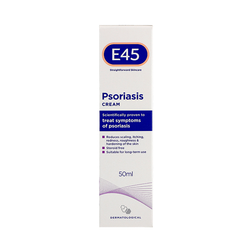
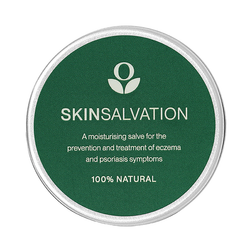
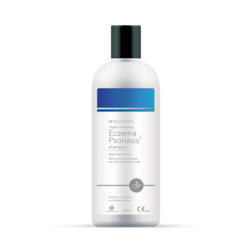
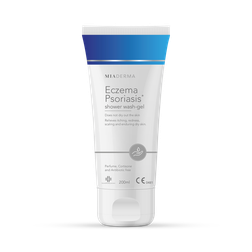
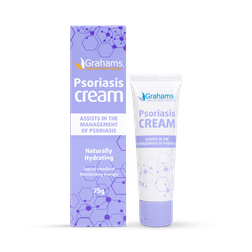
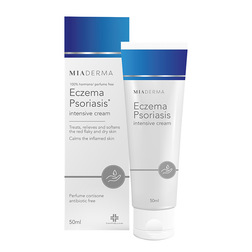


.png)








